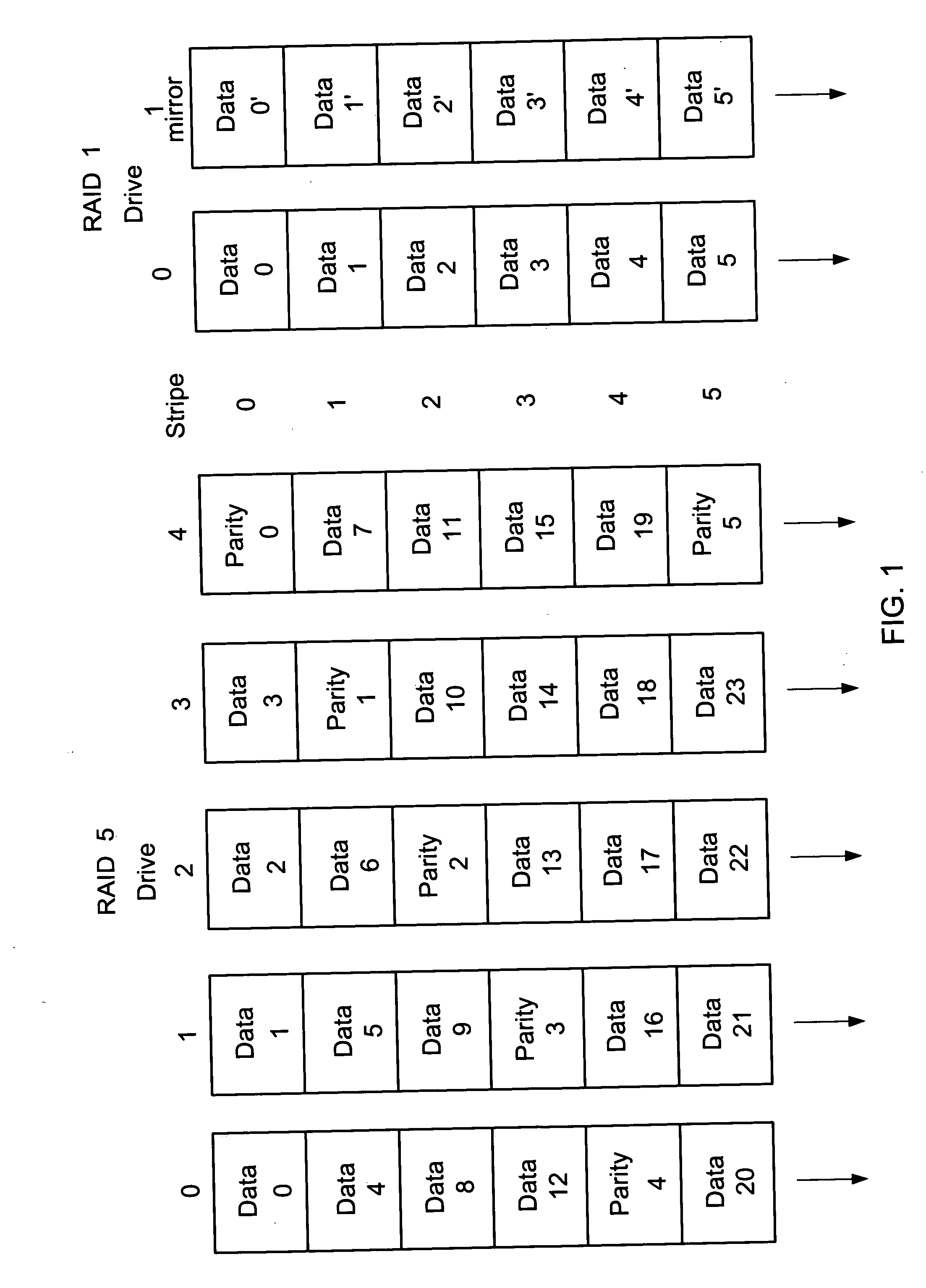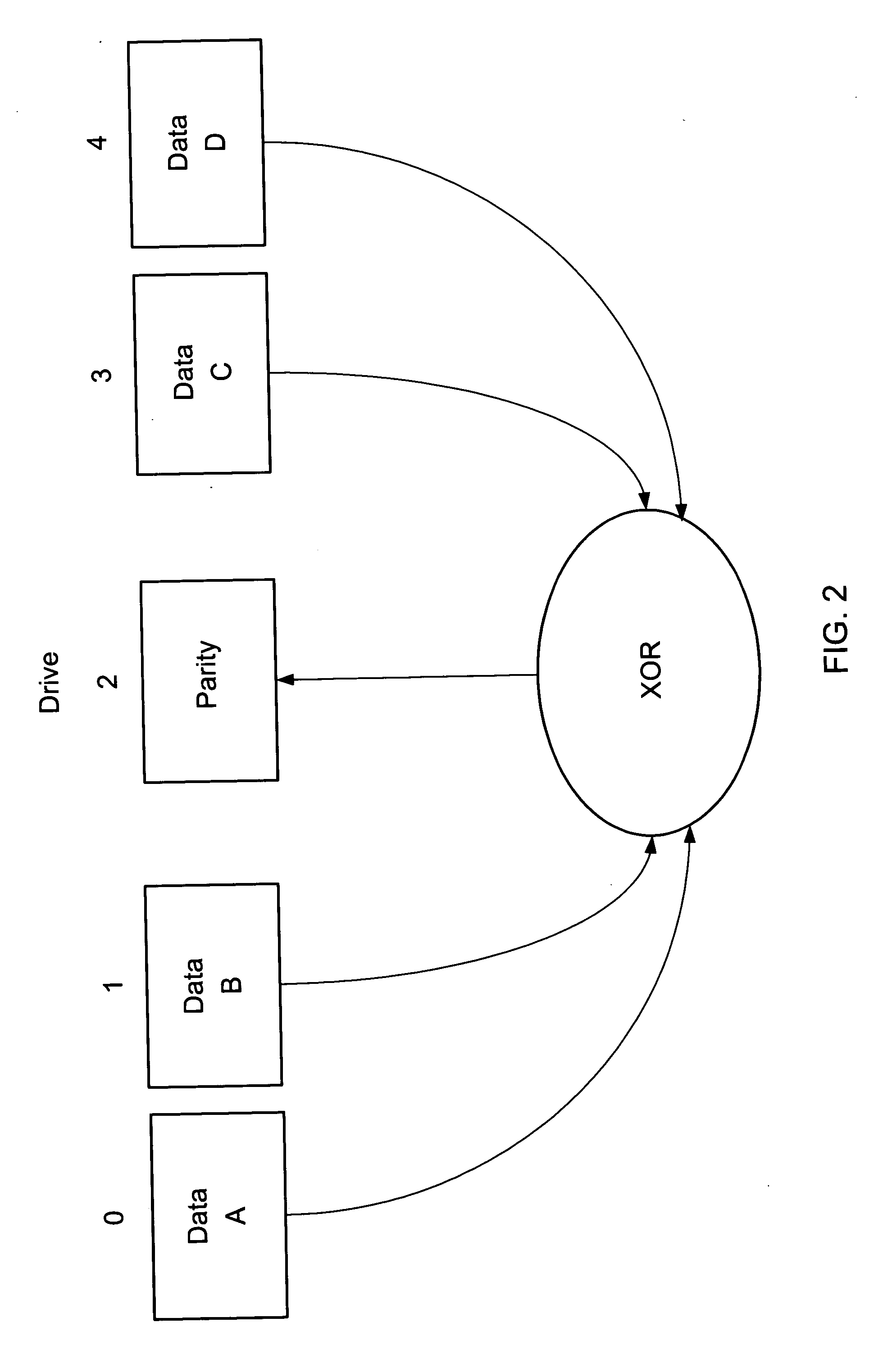Method for reducing rebuild time on a RAID device
a raid device and rebuilding time technology, applied in the field of computer data storage, can solve the problems of reducing the amount of memory available for other io processing, and the complexity of managing multiple concurrent rebuild ios, and achieve the effect of reducing the rebuild time on the raid devi
- Summary
- Abstract
- Description
- Claims
- Application Information
AI Technical Summary
Benefits of technology
Problems solved by technology
Method used
Image
Examples
Embodiment Construction
[0024] Reference will now be made in detail to the presently preferred embodiments of the invention, examples of which are illustrated in the accompanying drawings.
[0025] The present invention may apply to RAID storage systems that use a number of disk drives to store data and redundancy information. Redundancy information is used to provide recoverability in the event of an unreadable data block due to a drive failure or media error. The present invention uses RAID 1 and RAID 5 as examples even though it may also apply to other RAID levels without departing from the scope and spirit of the present invention. For RAID 1, redundancy information is a duplicate copy (a mirror) of each block of data. For RAID 5, redundancy information is parity. RAID 5 is a method that stripes data and parity across a group of N drives. Within each stripe are N−1 blocks of data and 1 block of parity. Each block is comprised of one or more disk sectors. The parity is interleaved across all drives. RAID ...
PUM
 Login to View More
Login to View More Abstract
Description
Claims
Application Information
 Login to View More
Login to View More - R&D
- Intellectual Property
- Life Sciences
- Materials
- Tech Scout
- Unparalleled Data Quality
- Higher Quality Content
- 60% Fewer Hallucinations
Browse by: Latest US Patents, China's latest patents, Technical Efficacy Thesaurus, Application Domain, Technology Topic, Popular Technical Reports.
© 2025 PatSnap. All rights reserved.Legal|Privacy policy|Modern Slavery Act Transparency Statement|Sitemap|About US| Contact US: help@patsnap.com



